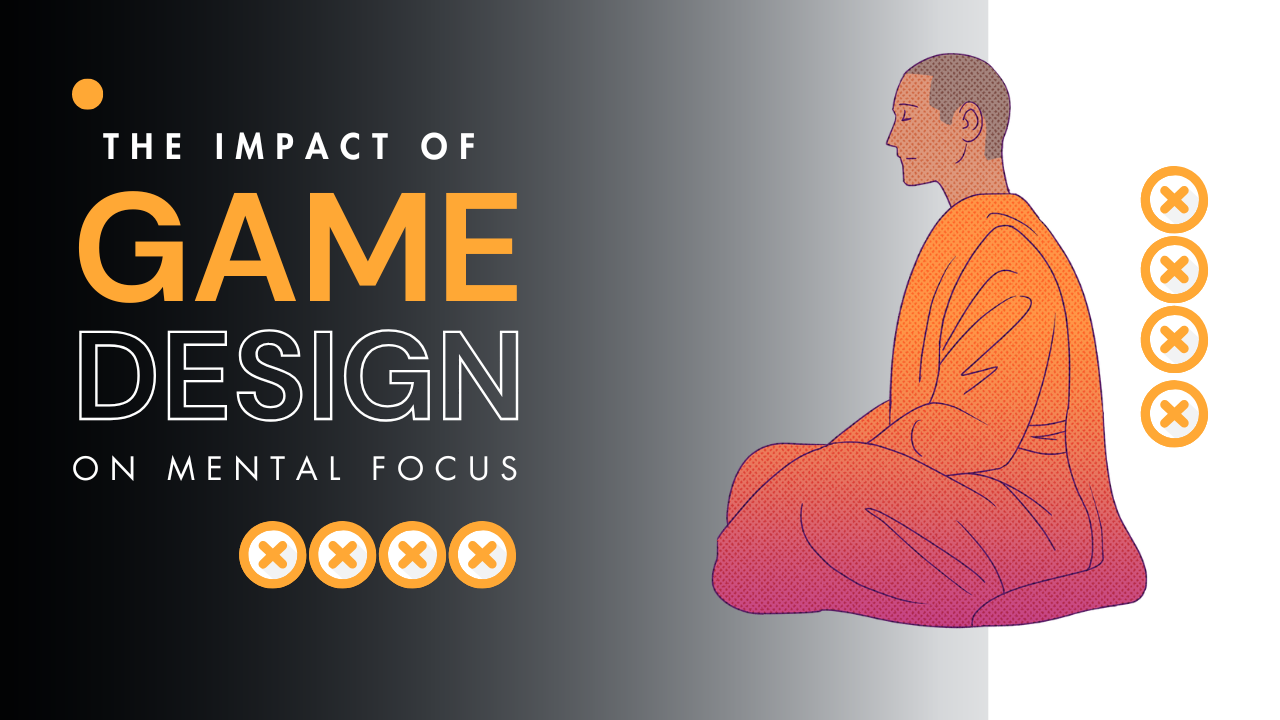How games affect focus, attention, and mental engagement
Video games are no longer merely a way to pass the time in the quickly changing world of digital entertainment. They are now potent instruments that change how our brains work. One of the most interesting things to learn about in current game production is how game design affects mental attention. Developers carefully design things like the speed of the game and visual and aural cues that have a direct effect on how long and how deeply players stay involved.
But how does the way a game is made help or hurt mental focus? Let’s look at the main design elements that have an effect on concentration and what they mean for gamers.
1. Game Mechanics and the Flow State
One of the best things about effective game design is that it may put people in a flow state, which is a mental state where they are completely engaged, involved, and loving what they are doing. A lot of the time, this happens when the game is at a “sweet spot” between being hard and being easy.
Important design elements:
- Clear goals: Games with clear goals help players stay focused and avoid getting too much information at once.
- Balanced difficulty: Adaptive difficulty algorithms keep players interested by keeping the game challenging without making them angry.
- Feedback loops: Rewards, achievements, or visual consequences that happen right away keep the brain active and interested.
Players that are in a flow state are very focused and often lose sight of time. This didn’t happen by chance; it was planned.
2. Visual Design and Controlling Attention
It’s not just about how the game looks; the graphics also help players focus. Good game designers use contrast and visual hierarchy to guide players’ attention where it needs to go.
Things that affect focus visually:
- Colour coding: Important things or opponents are generally shown in bright or strong colours.
- Lighting: Light sources can gently guide the player towards goals or dangers.
- UI/UX layout: Simple, clean interfaces help keep people focused and prevent mental weariness.
In fast-paced games like Call of Duty or Valorant, where response time is quite important, clear visuals are important for keeping a player’s mind on the game when things become tough.
3. Designing sound and getting people involved in their minds
Sound is a powerful tool that helps players stay focused by making them feel more immersed in the game and alerting them to events that happen in the game. Good auditory cues assist players be aware of their surroundings and focus on the most critical things they need to do.
4. Sound in Game Design:
Sound that comes from a certain direction: Footsteps or gunfire coming from certain directions assist players keep on their toes.
Music dynamics: Music that builds tension gets players ready for what’s to come.
Sound effects: Immediate auditory feedback validates successful actions, such hitting a target or opening a level.
People commend games like The Last of Us and Dark Souls for their emotional and deep soundtracks, which keep players intellectually engaged the whole time.
5. Game Types and How They Affect Attention
Different kinds of games need different levels and kinds of mental focus. For instance:
- You need to think logically and pay attention when you play puzzle games like Tetris and Portal.
- You have to prepare and make decisions for a long time in strategy games like Civilisation and StarCraft.
- You need to have quick reflexes, a good sense of space, and the ability to adjust quickly in action and shooter games.
Studies have shown that playing games in these genres on a regular basis can improve your ability to multitask, your working memory, and your ability to pay attention for long periods of time in real life.
6. Benefits for the brain vs. too much stimulation
Game design can help people focus, but it’s also necessary to be aware of the potential of overstimulation. If you don’t take breaks or play mindfully, fast-paced games that keep your senses busy all the time can make you mentally tired or make it hard to pay attention.
- Developers are starting to understand this balance better and are adding features like:And perhaps that’s the most pleasing situation of all.
- Timed reminders to play to avoid burnout
- HUDs that can be changed to fit the demands of each player
- When utilised on purpose, these elements encourage healthier engagement and keep your mind sharp over time.
7. In conclusion, think about the brain as you design.
There is more than just a hypothesis about how game design and mental attention are related; they are actually linked. Well-designed games can help you focus, improve your reflexes, and even boost your brainpower. Games can hold and guide attention in ways that other forms of media can’t. They do this through visual direction, sound engineering, adaptive physics, and immersive storytelling.
For developers, knowing how attention works means making experiences that are more interesting, rewarding, and mentally stimulating. Players can develop healthier, more aware gaming habits by understanding how game design affects their focus.
In a world when there are so many things to do, well-made games don’t simply keep us entertained; they also teach us how to focus, plan ahead, and live in the moment. And perhaps that’s the most pleasing situation of all.

